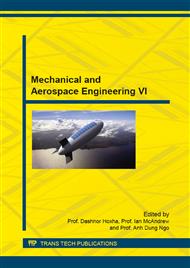p.3
p.8
p.15
p.20
p.25
p.30
p.36
p.41
Evaluation and Improvement of Performance Parameters for a Mechanical System Used in Minirobotics
Abstract:
The concept, design and construction of mechanical systems performance is limited by the ranges prescribed for different performance parameters (size, accuracy, repeatability, quality, safety, and cost). The aim of the research is to evaluate and improve the performance parameters for a mechanical system with multiple vertebrae drive by wire, to perform functions of exploration, inspection and intervention in limited space environments (anatomical). New mechanical structure contains modules that allow changing the work parameter and the algorithms to control the location (position, orientation) of the end effector. Sensory system can be configured depending on the product and the program chosen, embracing suitable position, bending and strength sensors. Error compensation by a feedback process has become the most economical solution and easier to apply. Rigidity functions and bending forces resolution are presented along with a simulation of robotic arm positions for all vertebrae. The results demonstrate the capability of this system to perform precise movements to an imposed target.
Info:
Periodical:
Pages:
15-19
Citation:
Online since:
October 2015
Authors:
Keywords:
Price:
Сopyright:
© 2015 Trans Tech Publications Ltd. All Rights Reserved
Share:
Citation:


